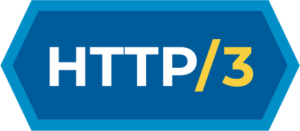
If you are using one of our managed servers with nginx, you can also deliver your websites with HTTP/3.
The concept of HTTP/3
HTTP/3 is not a further development of HTTP/2 (SPDY). HTTP/3 is very different from the other HTTP methods and combines the features of HTTP/2 with User Datagram Protocol (UDP). UDP is used, for example, for DNS queries. The other features of HTTP/2 are fully kept (e.g. parallel streaming of data from different sources).
Differences between HTTP/2 and HTTP/3
In contrast to HTTP/2, the new HTTP/3 protocol uses the UDP protocol instead of TCP to deliver web pages and it’s much faster.
With TCP, there are always multi-stage handshakes between the server and the browser. UDP and the QUIC protocol based on it, on the other hand, act connectionless. Instead of checking for successful delivery, only the integrity of the packet and the transmission is validated by a checksum, if required. This eliminates the so-called head-of-line blocking (data congestion) and thus the need to request missing packets again. The delivery of your page will be much faster.
The transmission is no longer done by IP address, but by an individual ID. If the visitor gets a new IP address on his device (e.g. when switching from mobile data to WLAN) HTTP/3 can continue the download without interruption or reconnection.
Enable HTTP/3
Open the corresponding web page in ISPConfig. Under “Advanced” you can directly enable HTTP/3:

QUIC and HTTP/3 require mandatory HTTPS over TLS 1.3. By the way, if you have set a lower version for “Minimum TLS version”, this does not mean that HTTP/3 will not work then (it is not called max TLS version). If the page is requested via HTTP/3, the encryption is automatically set to TLS v1.3.
Client-side requirements
The browser must support HTTP/3 in order for the visitor to your site to take advantage of it. If the browser does not support HTTP/3 or does not support it completely, your page will be delivered via HTTP/2 as usual.
By the way, the most common (current) browsers already support HTTP/3. Sporadically, however, a strange problem occurs: the browser decides to ignore QUIC and HTTP/3.
current state
Currently HTTP/3 is still under development and not 100% stable. It can happen that some websites do not work properly with HTTP/3. However, according to our observations, all current CMSs run completely without problems.
